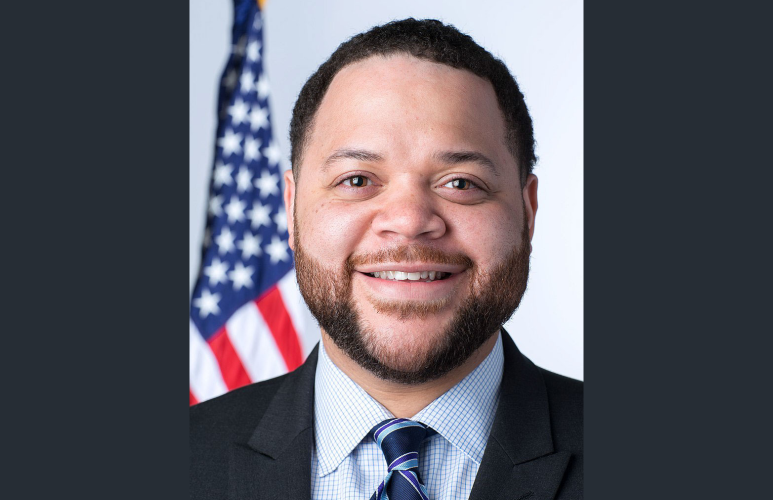
"locals serving locals for 20 years."
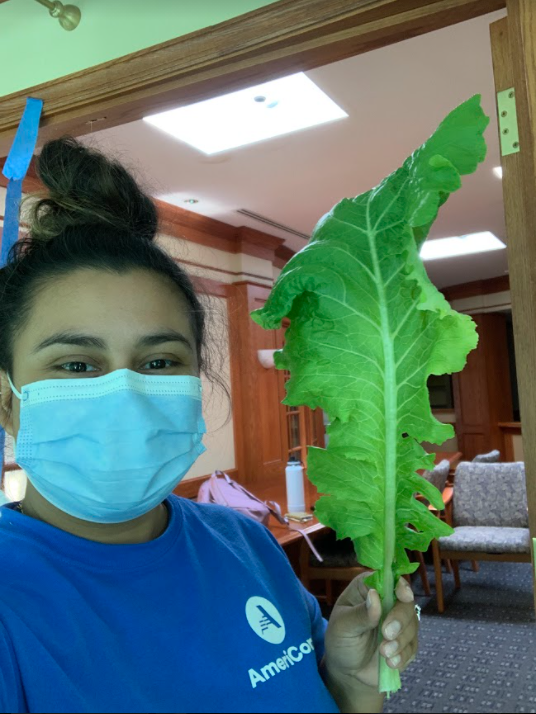
| Family Learning Solutions has Oneyda Hernandez serving this year and Oneyda is leading the way to provide food security for families by teaching them how to grow vegetables hydroponically. Here is a recent report. Partnership with ACRT, Clifton Park Baptist Church, Project Change-AmeriCorps and University of Maryland, Public Health Over the summer of 2021, we established a partnership with the Clifton Park Baptist Church to assist in the organization of essential food rescue services for those in need by supplying staff to help harvest the fresh produce grown in their hydroponic garden. FLS AmeriCorps Member Oneyda Hernandez is one of the individuals responsible for helping to maintain these gardens and works alongside the church’s volunteers to package the hydroponic lettuce into food rescue packages in preparation for distribution to community members. Prior to this, FLS is fortunate to have created partnerships with ACRT (September 2020) and Project Change-AmeriCorps (September 2018), and University of Maryland (November 2020) whose support has helped us expand our mentoring, tutoring, and FGH initiatives into the wider community. |
:quality(70)/cloudfront-us-east-1.images.arcpublishing.com/adn/MTVGDOYYBVDFNNLXFNHKZYFYNY.jpg)
By Paulina Firozi, The Washington Post December 19th 2021
Nathan Asher was scrolling through pages and pages of therapists. Starting in January, just shy of a year into the pandemic, they were looking for someone who could help with what felt like a crescendo of anxiety.
Asher, now 18 and a freshman at Appalachian State University in Boone, N.C., said around that time, things kept piling up. Facing mounting stress and burnout, Asher quit the French horn after six years only to pick up an entirely new instrument as they were applying to colleges for music. Their mother had recently been diagnosed with breast cancer, so their family was “pretty hard-core in lockdown because we didn’t want to put her at risk at all,” Asher said. Under the weight of it all, Asher was struggling and wanted help.
Multiple boxes needed to be checked: The therapist needed to offer virtual sessions or be nearby their North Carolina home. The therapist would need to be gender-affirming and familiar with LGBT patients, and would need to provide what felt like a supportive space.
But every search, Asher would come up short.
“I didn’t need an addiction therapist, I didn’t need a faith therapist, I didn’t need a relationship therapist,” they said. “I was calling and sending emails and very rarely would I get a reply back.”
Asher’s search for care came as health professionals say mental health challenges among youth and their families have skyrocketed, exacerbated in the last couple of years in part because of the pandemic. Over the past year and a half, they say the stressors that young people experience even normally have been amplified, disproportionately impacting communities hit hardest by the pandemic. For some, this has meant scrambling for care as demand swells and as some are left behind because of lack of access. Still, as public awareness grows around mental well-being, others are creating new outlets for relief when things get to be too much.
The message has only grown louder in recent months. In late October, three prominent medical groups declared a national state of emergency in children’s mental health. A recent report from the Centers for Disease Control and Prevention noted that while suicide rates dropped in 2020 overall, that wasn’t the case for younger Americans, with a slight uptick in suicides among all age groups 10 to 34, and a significant 5 percent increase among 25-to-34-year-olds. On Dec. 7, the nation’s top physician released a 53-page report that serves as an exclamation point on the warning that young people are in a crisis, saying the cumulative effect of the challenges they grapple with has been “devastating.”
“On the ground, in our clinics and hospitals, we’ve been seeing really increasing numbers of children with mental health concerns,” said Lee Savio Beers, president of the American Academy of Pediatrics. “A lot of what we’re seeing is more severe, and it’s getting harder and harder to access care. It just really felt like it was at a tipping point where we’re just seeing so many kids who are in need of support and without enough resources.”
[Suicide attempts among younger Alaskans have risen even as overall suicide deaths declined in 2020]
Beers, whose group was one of the three that made the declaration, detailed the ways education and normal activities for young people have been disrupted. Many have faced significant amounts of loss and grief. And these impacts on youth are disparate – the pandemic has had a profoundly disproportionate impact on communities of color.
“With the pandemic being such that it’s so isolating with us quarantining and socially distancing, I think people’s rates of depression, anxiety, for those who experienced trauma, maybe even PTSD, have gone up,” said Ernestine Briggs-King, a psychologist and Duke University associate professor. “And yet it’s been harder to access services – even though in some ways it’s been easier.”
Briggs-King said a ramp up in virtual therapy offerings during the pandemic in some ways increased whom providers have been able to reach, and allowed some people more options for accessing care. But she said people without equal access to telemedicine, perhaps because of a lack of Internet or smartphone access, have been left behind.
For some young people, increased demand for online therapy meant providers were booked and unavailable in times of need.
This year was not Asher’s first time searching for mental health care – they had previously struggled with depression in ninth grade. Around that time, they said they realized they were transgender. Asher came out that summer at a music camp, and then switched schools entirely going into 10th grade.
Asher had previously been diagnosed with a “mild episode of a major depressive disorder and generalized anxiety disorder,” they said. So when stress during the pandemic accumulated, Asher knew how to look for a therapist. But this time, there were new obstacles, compounded by the public health crisis.
It took three months before Asher was able to find a therapist “because all of the telehealth therapists were full, and a lot of normal therapists were not wanting to make the switch to teletherapy.”
When they finally found someone to connect with, the therapist suggested Asher get an evaluation for ADHD. That evaluation wouldn’t happen until June.
“So I spent a good six months just kind of ruminating about the fact that I may or may not have ADHD,” Asher said. After that appointment, Asher said, they were diagnosed with autism, in addition to a confirmed ADHD diagnosis. The right diagnosis came as both a relief and its own source of stress – they began to understand underlying causes of their experiences, but it meant Asher needed to find more help, more answers, and perhaps face more roadblocks, as the pandemic continued.
“You start to realize, ‘Wow, this system is not made to support me,’ ” Asher said. “This system is not made to be accessible.”
Even before the pandemic, “we were in the middle of a children’s mental health crisis,” said Nathaniel Counts, a senior vice president of behavioral health innovation for Mental Health America.
He said in the decade before the pandemic, rates of adolescent major depressive episodes surged, and rates of children presenting in the emergency department for self-harm and suicidal ideation were increasing.
Then the pandemic hit, bringing its own set of burdens.
“The two words I’d used to describe it are disruption and stress,” he said. “The way that covid affected children is very different, depending on the child. But the common theme is it disrupted your day-to-day activities and created a new set of stressors for your family and for yourself.”
In big ways and small, the enduring public health crisis may have dramatically changed the daily world of a child or teen.
There were missed days of school, canceled sports competitions, skipped playdates; loss of access to mental health care or social services or food; loss of loved ones – the U.S. Surgeon General’s report cites these and a multitude of other unprecedented challenges that could have played a role in overall mental well-being.
Since the pandemic’s start, the report says “rates of psychological distress among young people, including symptoms of anxiety, depression, and other mental health disorders, have increased.” It points to recent research covering 80,000 young people worldwide that found depressive and anxiety symptoms doubled during this time.
There is also a growing public awareness about youth mental health that is partly a result of young people themselves discussing the issue and reducing the stigma, including through social media, said Danielle Ramo, a clinical psychologist and chief clinical officer at BeMe Health, a digital mental health platform for teens.
“Some of it is just broadly this generation being a bit more open in talking about their struggles,” she said. “And the plethora of the social world and the internet makes those conversations more public.”
Sreeya Pittala found herself struggling a few months into the pandemic and virtual school. Feeling “more alone than ever,” she said she wanted a place to have an open conversation about mental health, something she felt her school was missing.
So Pittala, now an 18-year-old senior at Newark Charter School in Delaware, started a chapter of Bring Change to Mind, a national nonprofit with student-led clubs at high schools across the country.
The group started meeting virtually, an outlet for members to talk about any struggles or anxiety related to school. At the time, there was plenty fueling that stress.
Going through the motions of high school behind a screen became an unending task, Pittala said. There were always assignments to complete even while the options for a respite – a lunch break at school with peers, time with friends at all – had been taken away. Even when calls with friends were scheduled, Pittala said, they were often for the purpose of working together on school assignments rather than “scheduling a call just to talk about life.”
She described the pandemic for teenagers as “pretty lonely.”
“It was just really unmotivating and exhausting. It felt miserable at times,” she said.
In its October declaration, the American Academy of Pediatrics, the American Academy of Child and Adolescent Psychiatry and the Children’s Hospital Association called for increased federal funding for mental health screenings, diagnosis and treatment. It also urged increased funding for and implementation of mental health care in schools.
“If you have really strong mental health and social emotional programing in schools that’s focusing on health promotion, that’s going to help create an environment that is more supportive of all children,” Beers said.
In November, the chief executive of the Children’s Hospital Association submitted a letter to the Senate Finance Committee calling for support for children’s mental health. The group said the letter was in response to an earlier request from lawmakers for input on ways to “develop bipartisan legislation to address barriers to mental health care” amid worsening trends during the pandemic.
In his recent advisory, U.S. Surgeon General Vivek H. Murthy said it would take an “all-of-society” effort to address mental health, and urged action.
“It would be a tragedy if we beat back one public health crisis only to allow another to grow in its place,” Murthy said.
Jessica Caballero, 17, is also involved in a Bring Change to Mind club at West Ranch High School in Stevenson Ranch, Calif. Even before the pandemic, she described a challenging start to the school year that began in 2019. There were fires near where she lives in Southern California. In the fall, she went into lockdown when there was a shooting at another school in the district.
“It wasn’t really a good year for any of us, you could say – all this stress and anxiety,” she said. “When covid hit, it just hit all of us pretty hard.”
She remembers thinking she’d have just a couple of weeks off school. Then her aquatic club team practices were canceled. The in-person school year vanished.
“It really left me in a state of isolation,” she said.
She found solace in her family and her little siblings. She also found comfort in the club meetings that provided a place to talk openly about mental health.
“As a Mexican American Peruvian, mental health was never a huge topic in my household. It was always kind of seen as a choice like, ‘Oh, are you depressed? Just be happy. You have no reason to feel like this,’ ” Caballero said. “So I never really had this kind of strong connection with anybody in particular, especially when it came to talking about my own struggles.”
She said she wishes “more people just validated the feelings of people who need to talk and who need help.”
Counts said he believes young people should also be “directly engaged” with coming up with solutions for meeting youth mental health needs.
“The world of children is changing so rapidly, far more rapidly than I think adults can grapple with,” he said. “Only young people really have that kind of fundamental insight into what it is they need.”
Beyond school walls, Briggs-King said, it helps to have resources and sources of support in any space young people are in. That can come from coaches, teachers or neighbors – because when an entire community understands more about trauma, it may be better equipped to notice when issues arise.
She said: “Then you have a piece to communicate about a topic of conversation: ‘You know, I was worried about you. How are you sleeping? I know you’re not hanging out with your friends, you’re not playing sports – are you OK? Is there anything going on?’ “
Having an understanding of mental health and trauma can also help people communicate what they are feeling, she said, and can help families and friends pay attention to signs and express concerns they may have about loved ones.
Briggs-King added: “My mama used to say, ‘You know better, you do better.’
If you or someone you know needs help, call the National Suicide Prevention Lifeline at 800-273-TALK (8255). You can also text a crisis counselor by messaging the Crisis Text Line at 741741.
The Washington Post’s Dave Jorgenson and Chris Vazquez contributed to this

By Emilie Plesset
Before he was assassinated at age 39, the Rev. Dr. Martin Luther King Jr. led the 1955 Montgomery bus boycott, organized the 1963 March on Washington, advocated for civil disobedience and non-violent protest, and became one of the most influential figures in American history.
Fifty years after his death, here’s a look back at some of the civil rights leader’s most memorable speeches.
“I Have a Dream” – Washington, D.C., August 28, 1963
In his most famous speech, King stood on the steps of the Lincoln Memorial and called for an end to racism in the United States before a crowd of more than 250,000 people.
“I say to you today, my friends, though, even though we face the difficulties of today and tomorrow, I still have a dream. It is a dream deeply rooted in the American dream.”
“Our God is Marching On” – Selma, Alabama, March 25, 1965
Delivered after the historic marches from Selma to Montgomery, historians consider King’s triumphant deliverance of his “Our God is Marching On” speech to mark the end of the civil rights movement’s first phase focusing on legal and political rights. The movement would later focus on fighting for economic equality.
“How long? Not long, because no lie can live forever. How long? Not long, you shall reap what you sow… How long? Not long, because the arc of the moral universe is long, but it bends toward justice.”
“Beyond Vietnam: A Time to Break the Silence” – Riverside Church in New York City, April 4, 1967
Exactly one year before his assassination, King condemned the Vietnam War at a time when a majority of Americans still supported the effort. King was criticized for the speech, considered one of his most controversial, and lost supporters for being too political.
“We are taking the black young men who had been crippled by our society and sending them 8,000 miles away to guarantee liberties in Southeast Asia which they had not found in Southwest Georgia and East Harlem.”
“The Other America” – Stanford University, April 14, 1967
Just 10 days after declaring his opposition to the Vietnam War, King spoke to a crowd at Stanford University and advocated for economic and social equality. In his “Other America” speech, King described “two Americas” to highlight the growing poverty gap in the United States as a root of inequality. King gave a similar version of this speech at Michigan’s Grosse Pointe High School on March 14, 1968.
“One America is beautiful for situation… millions of young people grow up in the sunlight of opportunity. But tragically and unfortunately, there is another America. This other America has a daily ugliness about it that constantly transforms the ebulliency of hope into the fatigue of despair… They find themselves perishing on a lonely island of poverty in the midst of a vast ocean of material prosperity.”
“I’ve been to the Mountaintop” – Memphis, Tennessee, April 3, 1968
In his final speech, King addressed a church filled with striking sanitation workers who were protesting their low pay and working conditions. King emphasized the importance of unity and nonviolent protest in the fight for justice, no matter how painful the struggle.
“Well, I don’t know what will happen now. We’ve got some difficult days ahead. But it really doesn’t matter with me now, because I’ve been to the mountaintop… And I’ve seen the Promised Land. I may not get there with you. But I want you to know tonight, that we, as a people, will get to the Promised Land.”

MLK day invites us to reflect not only on service but on leadership. Here is an inspiring video on the principles of Servant Leadership, the role that MLK best epitomized.
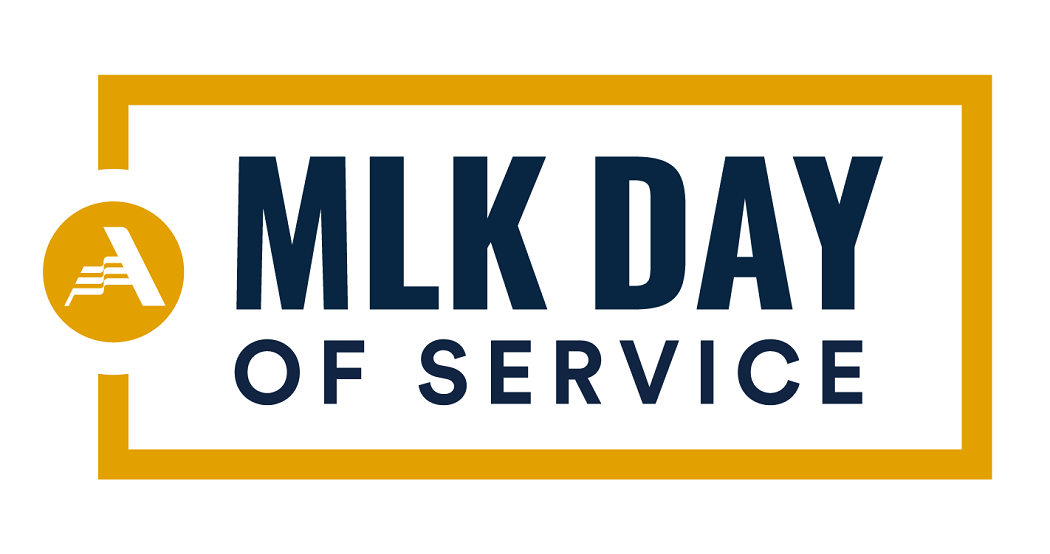
Watch and be inspired by the dancers of the Harlem ballet as they celebrate The Movement and remember MLK Day in a special Way.
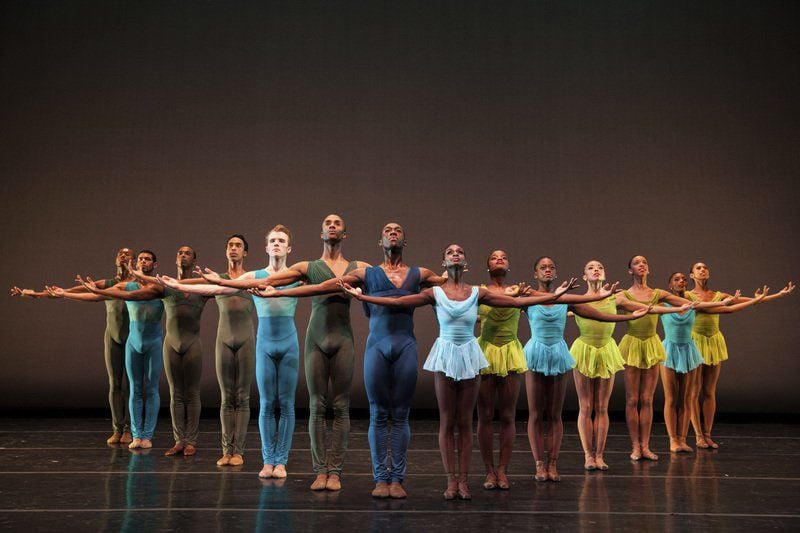
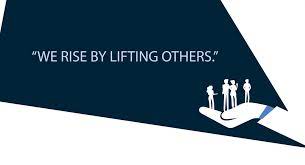
Before we dive in five of the most intriguing and thought-provoking talks on the past, present and future of Servant Leadership, if you are not well-acquainted with this concept, just watch the video below:
Now that you have covered the basics, let’s move on to listen to three people that have been practicing Servant Leadership, in one capacity or another, and have a lot of wisdom to share:
David Marquet summarizes his career so far on his LinkedIn profile like this: “Bestselling Author, International Top Ranked Keynoter, saving companies $$millions by building leaders at every level.”
So it’s fair to say that a talk by him on what happens when you give people control and how you can coach them into using it in a constructive way is a definite must-see.
Ali Fett, whose motto is “who you are is good enough; don’t ever stop creating better versions of yourself. It feels great to grow” shares how leaders and coaches can serve others and show them the path towards becoming the best version of themselves.
American author Ken Blanchard has a mission: he wants to turn every leader into a servant leader! In this talk he discusses servant leadership and draws attention to the self-centered leader. When a leader believes that leadership is all about them, where you they want to go and what they want to achieve, then their leadership, by default will be more self-focused.
On the other hand, if your leadership revolves around meeting the needs of the organisation and the people working for it, you will make different choices that will reveal a more “others-focused” approach.
______________________________________________________________________________
If you are in need of more Servant Leadership inspiration in your life, make sure to check the relevant articles on the Agile Actors Playbook:

Tim Denning On Medium Dec 29, 2021 · 6 min read
Harvard is now officially a school for stupid, rich people.
Successful businessman Balaji Srinivasan said this recently. It took me by surprise. The comment came after Harvard University announced that in 2026 no SAT or ACT requirements are needed.
Whether or not you believe in higher education or traditional schools is irrelevant. The point is that education is transforming out of necessity.
Another issue is that teachers get paid poorly. Their role in society isn’t valued highly enough.
That’s why many of them are going online to find other ways to teach and get paid to do it. My US friend on Twitter left his job at a public school to teach online. He now makes more than $20,000 a month teaching online courses.
An education transformation is inevitable.
Here’s what isn’t normally taught in schools (and should be).
School gave me zero financial education. The basics of investing are a survival skill, thanks to record-high inflation. Most adults still don’t understand the second tax of inflation.
Even worse, most adults still don’t understand how money gets created out of nowhere and enters the economy.
School did something bad to me. Schools in Australia up until recently allowed banks into classrooms to sell products to kids. They gave them bank accounts called “dollar mites.”
The schools got a flat fee plus a kickback commission as a sweetener. Many of the kids held onto these accounts for life because, despite what you might think, many people don’t change banks due to the friction involved.
The government finally stepped in to stop the selling of bad money advice to children. It still happens in many parts of the world. Once you have a six-month emergency fund, a savings account is the worst financial product in the world that pays you 0%.
Schools need real financial education, not bank-sponsored education.
At the end of high school the career counselor said “you must pick one career.” She tried to force me to study a trade like plumbing. Unclogging poo in toilets made me vomit in my mouth, just a little.
I couldn’t decide on a career so I left the school and went to another one. Didn’t fix the problem but worth a try.
The choose a job and do-it-for-life days are over.
School kids get taught to do one thing for work when the reality is they will do multiple things to earn a living over their lifetimes. As the rapid rise of technology continues, so too will the yearly evolution of the work skills we need.
Schools need to normalize the multi-career path.
School doesn’t teach the downsides of the victimhood mentality that’s infected so many parts of the world.
We have too many victims. We have too many people begging for sympathy cards in return for a free ride.
Real life isn’t fair.
None of us gets a clear run of fair opportunities to step into. You make life fair by not giving up. By pushing through the oppressors, not begging them to step down or waiting for them to get voted out of power.
When you get slapped down by life, become the hero of your story. Own it. See it for what it is: a huge advantage, plus free motivation.
Social media isn’t just about pretty pictures of exotic locations or 15-second TikTok videos anymore. Social media is communication. Without proper online communication skills, you get left behind.
A class in social media would teach how to:
“I’m right and you’re wrong.”
Wars stem from this fatal skill we learn at school. Deep thinkers that change the world can hold two opposing views in their head at the same time.
They can believe that making money online is bad because it can increase credit card fraud, while simultaneously believing that an online business can help a person buy their time back and work from anywhere they choose.
School should teach us to stop trying to be right — and to learn to make people think.
The subject of psychology is a class you can choose to take at most schools. It shouldn’t be a choice.
When you understand human psychology you understand the world better and how it works. Fear is a crucial lesson we can learn from by studying psychology. School accidentally pushes us towards the path of comfort when all the intellectual growth is found when we get uncomfortable.
Once you know what your fears are you can understand at a deep level what will likely hold you back for the rest of your life.
You can work on your fears. You can master them. You can make your fears your slave rather than the other way round.
I can’t believe school doesn’t force us to study fear.
Tim Ferris made a comment recently on his podcast that the main thing that keeps him awake at night is climate change.
It’s the biggest problem of the 21st century. Governments globally are still snoozing on it. Yet the signs of the Earth getting warmer are now undeniable. We all feel them. We all experience the wild changes in weather that never used to exist.
School doesn’t go deep on climate change. You’d be seen as a weirdo if you dared bring up the fact that farming animals for food is one of the biggest causes of climate change on Earth.
Until we learn more about climate change, the urgency to fix it won’t be there. Every year that goes by, the damage becomes more irreversible. You and I will probably be fine. But what about future generations?
Climate change education must start in schools.
Schools are full of tests. Get a good grade? Good boy? Fail on a test? Bad boy.
Life couldn’t be more different. Life tests you. With business, for example, you’re supposed to fail multiple times. That’s how you learn what *not* to do.
Rejection is seen as bad too. Get rejected from your favorite prestigious university like Harvard? You should get upset. You should feel bad. Wrong. Getting rejected makes you want a goal MORE.
Rejection increases motivation.
Get rejected from every job you apply for, like I did when I got fired, and you’ll become the most direct, succinct, assertive, beautiful human.
Rejection isn’t failure. Rejection is redirection to a better opportunity.
You know, so we don’t lose our job and end up on the street.
One income equals enormous risk, yet this is the default path taught in schools. If you have one income then all it takes is a predictable recession to blow you over and force you into survival mode aka desperation.
Schools should teach us how to monetize the skills we gain more than once.
You do good on a test at school and you’re supposed to get all the rewards.
Those who are good at tests know how to follow the rules. But those who know how to legally break the rules get all the rewards in real life.
Following the rules stalls your life. Breaking the perceived rules turns on the turbocharger. It helps you see solutions others can’t. You find second and third doors the majority of people miss.
If there’s one necessary skill to learn in life, it’s that there are no rules. You make up the freaking rules as you go along. School doesn’t teach you that.